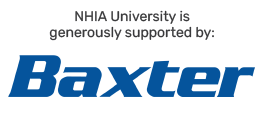
Agents for Cleaning and Disinfecting Sterile Compounding Areas
-
Register
- Prices available after logging in
Cleaning. The term sounds simple enough. Yet, when applied to sterile compounding areas, the term becomes complex. It not only covers the mechanical act of cleaning but the selection and application of different, essential agents. Additionally, procedures for the act of cleaning and a schedule determining when and which items and areas are cleaned, are essential to compounding operations. The 2021 version of USP General Chapter <797> improved upon the language surrounding the agents used in sterile compounding areas, but there is still confusion around what the agents do and what defines an appropriate agent. This article explores the agents used to meet the cleaning requirements of USP General Chapter <797> and does not address deactivation and decontamination, as required by USP General Chapter <800>.
Learning Objectives:
- Distinguish between cleaning (removing soil load) and disinfecting (killing microorganisms).
- Be able to determine which type of agent to use for daily, optional weekly, and monthly cleaning in your own sterile compounding environment.
- Understand the advantages and disadvantages of several common agents used in sterile compounding areas.

Abby Roth, BS, CMQ/OE
Founder
Pure Microbiology
Abby Roth, founder of Pure Microbiology, has over 18 years of experience in supporting the testing and consulting needs of the pharmaceutical, medical device, and compounding industries. Her background in pharmaceutical microbiology includes extensive knowledge of environmental monitoring. Abby served as a USP Compounding EC member during the 2015-2020 cycle. She is an involved member of the Controlled Environment Testing Association (CETA), serving on the Board of Directors, speaking at its annual meetings, and chairing committees for the revision of four CETA Application Guides. Abby has been invited to speak for state boards of pharmacy and for national organizations.
